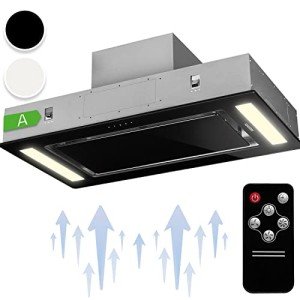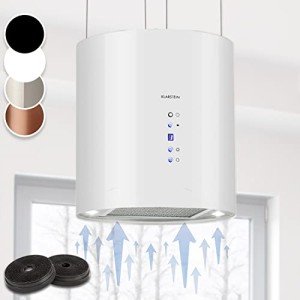Island Extractor Hoods Tools To Help You Manage Your Daily Life Island…
페이지 정보

본문
Island Extractor Hoods: The Ultimate Guide to Choosing and Maintaining Your Kitchen's Ventilation System
In modern-day cooking areas, an island extractor hood is not simply a functional necessity, it also functions as a centerpiece that improves the aesthetic of the area. As open-concept living environments continue to increase in popularity, comprehending the features, benefits, and maintenance of island extractor hoods becomes important for house owners. This article will dig into the various aspects of island extractor hood for island hoods, helping readers make informed decisions based on their kitchen needs.

What Are Island Extractor Hoods?
Island extractor hoods are ventilation systems designed to be installed above kitchen islands, ensuring efficient air filtration while blending seamlessly with the kitchen's style. Unlike traditional range hoods that are generally mounted against a wall, island hoods are suspended from the ceiling, which uses more versatility in kitchen designs.

The main function of an island extractor hood is to remove airborne grease, smoke, steam, and smells created during cooking, therefore improving indoor air quality. This is especially important in open-concept homes where the kitchen is incorporated into the home.
Advantages of Island Extractor Hoods
There are numerous advantages to setting up an island extractor hood in your kitchen:
Improved Air Quality: They filter and expel toxins, ensuring a healthier cooking environment.
Style Flexibility: Available in numerous sizes, styles, and finishes, they can match any kitchen style.
Improved Lighting: Many designs come geared up with incorporated lighting, illuminating the cooking surface listed below.
Sound Reduction: Modern models are created to operate silently, decreasing disruptions in an open-concept layout.
Improved Home Value: A well-chosen island hood can increase the visual and practical appeal of a kitchen, thereby enhancing home value.
Key Features to Consider
When choosing an island extractor hood, several features ought to be taken into account:
| Feature | Description |
|---|---|
| Size | Select a hood that is comparable to or somewhat bigger than the cooking surface measurement. |
| Extraction Rate | Determined in CFM (cubic feet per minute), this rate suggests how much air the hood can move. |
| Filtration Type | Options include ducted (vented) and ductless (non-vented) systems, depending on home layout and choices. |
| Control Type | Consider easy to use controls; options consist of mechanical buttons, touch controls, or push-button controls. |
| Noise Level | Check the sone score; lower ratings show quieter operation, crucial for open spaces. |
| Lighting | Try to find models with integrated LED lights for boosted presence while cooking. |
Setup Types
There are three main installation types you can pick from for island extractor hoods:
Ducted Hoods: These use ductwork to expel air outside the home. They are generally more efficient but need a more intricate installation procedure.
Ductless Hoods: These recirculate filtered air back into the kitchen. They are easier to set up however might require more regular filter replacements.
Convertible Hoods: This type can be adapted to run as either ducted or ductless, offering versatility based upon the property owner's requirements.
FAQs About Island Extractor Hoods
What is the ideal height to install an island extractor hood?
The ideal height for setup is typically 30-36 inches above the cooking surface. However, this could differ depending upon the specific model and the user's height.
How do I tidy and maintain my island extractor hood?
Regular maintenance is vital for ideal performance.
- Clean the exterior utilizing a mild soap option and a soft cloth.
- Change or tidy filters as advised by the manufacturer.
- Make sure the ducting system is clear of obstructions if utilizing a ducted model.
How often should I change the filters?
For ductless hoods, charcoal filters must ideally be replaced every 6 to 12 months, while grease filters may need more regular cleaning, such as every 2-4 weeks, depending upon usage.
Are island extractor hoods energy-efficient?
Numerous designs are created with energy-efficient motors and LED lighting options. Try to find products that boast ENERGY STAR certifications or similar scores.
Can I set up an island extractor hood myself?
While some might select to undertake the setup, it's suggested to employ a professional, specifically for ducted systems, to ensure safety and proper fitting.
Maintenance Tips for Island Extractor Hoods
To guarantee durability and efficiency, think about the following maintenance practices:
Regular Cleaning: Clean grease filters, baffle filters, and the exterior surface month-to-month to prevent accumulation.
Inspect Ductwork: Inspect duct systems for clogs or damage every six months, guaranteeing optimum airflow.
Replace Filters: Follow maker guidelines for changing or cleaning up filters to keep air quality.
Screen Performance: If you observe minimized airflow or increased noise, it might be time to seek advice from an expert for repair or maintenance.
island chimney hood extractor hoods have developed significantly, providing innovative functions and capabilities that not just enhance kitchen efficiency but also elevate home aesthetics. By carefully thinking about size, purification type, and setup preferences, property owners can choose the best island hood for their requirements. Routine upkeep makes sure performance and durability, making this kitchen device a valuable investment for click through the up coming document any family. Whether upgrading an existing hood or setting up a new one, comprehending these systems is vital for accomplishing a functional and elegant kitchen island extractor fan environment.
- 이전글What's The Current Job Market For Kitchen Built In Oven Professionals? 25.05.18
- 다음글Five Killer Quora Answers On Best Ovens Uk 25.05.18
댓글목록
등록된 댓글이 없습니다.
